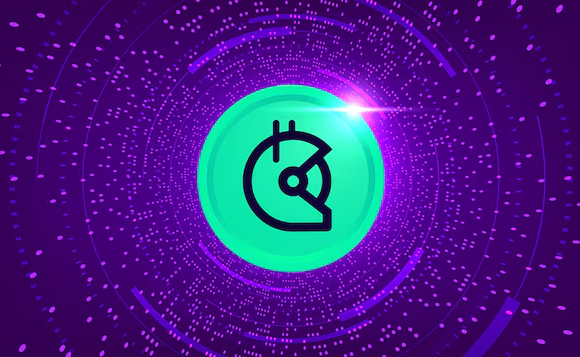-
 Bitcoin
Bitcoin $96,127.0414
-3.14% -
 Ethereum
Ethereum $2,612.0101
-15.44% -
 Tether USDt
Tether USDt $1.0010
0.11% -
 XRP
XRP $2.3569
-16.63% -
 Solana
Solana $197.2514
-7.36% -
 BNB
BNB $573.1841
-11.89% -
 USDC
USDC $1.0001
0.01% -
 Dogecoin
Dogecoin $0.2563
-14.01% -
 Cardano
Cardano $0.7187
-17.97% -
 TRON
TRON $0.2200
-8.37% -
 Chainlink
Chainlink $19.1686
-13.93% -
 Avalanche
Avalanche $25.6141
-17.28% -
 Stellar
Stellar $0.3321
-13.45% -
 Sui
Sui $3.2055
-11.90% -
 Toncoin
Toncoin $3.8980
-15.66% -
 UNUS SED LEO
UNUS SED LEO $9.8143
0.88% -
 Hedera
Hedera $0.2343
-14.51% -
 Shiba Inu
Shiba Inu $0.0...01469
-14.72% -
 Hyperliquid
Hyperliquid $23.7209
3.29% -
 Bitget Token
Bitget Token $6.2158
-4.58% -
 Litecoin
Litecoin $96.4556
-17.00% -
 Polkadot
Polkadot $4.7002
-17.20% -
 Bitcoin Cash
Bitcoin Cash $320.1068
-19.48% -
 Ethena USDe
Ethena USDe $0.9996
-0.05% -
 Uniswap
Uniswap $9.6139
-8.30% -
 Dai
Dai $0.9999
-0.01% -
 MANTRA
MANTRA $5.2774
3.12% -
 Pepe
Pepe $0.0...09702
-19.96% -
 NEAR Protocol
NEAR Protocol $3.4438
-16.26% -
 Ondo
Ondo $1.2359
-6.22%
What is the circulation volume of Gitcoin?
Gitcoin's circulation volume of approximately 50 million GTC places it among the top 100 cryptocurrencies by market capitalization, reflecting its growing popularity and adoption.
Nov 29, 2024 at 06:40 pm

Circulation Volume of Gitcoin: A Comprehensive Overview
Introduction
Gitcoin is a Decentralized Autonomous Organization (DAO) that serves as a platform for funding open-source software development. Its native token, GTC, plays a crucial role in facilitating governance, incentivizing contributions, and rewarding community members. One of the key metrics used to assess the health and liquidity of a cryptocurrency is its circulation volume. This article delves into the concept of circulation volume and explores the factors influencing Gitcoin's circulation volume.
Understanding Circulation Volume
Circulation volume, also known as circulating supply, refers to the number of tokens that are currently in circulation and available for trading. It is calculated by subtracting the number of tokens held in reserve by the treasury, development team, or other locked accounts from the total supply. A higher circulation volume generally indicates greater liquidity and accessibility for investors.
Factors Influencing Gitcoin's Circulation Volume
Several factors impact the circulation volume of Gitcoin:
- Token Issuance and Distribution: The initial supply of GTC tokens was distributed through various mechanisms, including token sales, community grants, and airdrops. The release schedule and distribution strategy can influence the circulation volume.
- Token Buyback and Burn Mechanisms: Gitcoin has implemented a token buyback and burn mechanism where a portion of transaction fees generated by the platform is used to repurchase GTC tokens and remove them from circulation. This can reduce the supply and increase the scarcity of GTC, leading to an increase in its price and value.
- Staking and Liquidity Incentives: Gitcoin offers staking rewards and liquidity incentives to encourage users to hold and lock up their GTC tokens. By providing incentives to hold, these mechanisms can reduce the circulation volume and increase the demand for GTC.
- Market Demand and Speculation: Like any other cryptocurrency, Gitcoin's circulation volume is influenced by market demand and speculative trading. Increased interest and positive news can drive up demand, leading to a rise in circulation volume as investors acquire GTC tokens.
Impact of Circulation Volume on Gitcoin
The circulation volume of Gitcoin has a significant impact on various aspects of the platform:
- Liquidity: A higher circulation volume enhances liquidity, making it easier for investors to buy, sell, and trade GTC. This is crucial for the smooth functioning of the platform and ensures that investors have adequate liquidity to participate in the ecosystem.
- Price Stability: A large circulation volume can contribute to price stability by absorbing market volatility and reducing the impact of price fluctuations. This is important for maintaining confidence among investors and ensuring that the GTC token remains a valuable asset.
- Community Engagement: By incentivizing GTC holders, a higher circulation volume can increase community engagement and foster a sense of ownership among members. This can lead to increased participation in platform activities and decision-making.
Circulation Volume and Market Position
As of July 2023, Gitcoin has a circulation volume of approximately 50 million GTC. This places it in the top 100 cryptocurrencies by market capitalization. The circulation volume has been increasing steadily over time, reflecting the growing popularity and adoption of the Gitcoin platform.
Conclusion
Circulation volume is a key metric that provides insights into the liquidity, market demand, and overall health of a cryptocurrency. Gitcoin's circulation volume is influenced by a combination of factors, including token issuance, buyback and burn mechanisms, staking incentives, and market sentiment. A higher circulation volume benefits Gitcoin by enhancing liquidity, promoting price stability, and fostering community engagement. As the platform continues to grow and gain adoption, it is likely that Gitcoin's circulation volume will continue to increase, solidifying its position as a leading player in the open-source software funding ecosystem.
Disclaimer:info@kdj.com
The information provided is not trading advice. kdj.com does not assume any responsibility for any investments made based on the information provided in this article. Cryptocurrencies are highly volatile and it is highly recommended that you invest with caution after thorough research!
If you believe that the content used on this website infringes your copyright, please contact us immediately (info@kdj.com) and we will delete it promptly.
- Shiba Inu (SHIB) Struggles as Rexas Finance (RXS) Emerges in 2025
- 2025-02-03 23:10:58
- How to Create a Successful Meme Coin Campaign
- 2025-02-03 23:10:58
- How Social Media Influencers and Celebrities Shape the World of Meme Coins Like Pepe Coin
- 2025-02-03 23:10:58
- The PEPE Token Market Moves toward a Critical Network Update
- 2025-02-03 23:10:58
- Catzilla: The Emerging Meme Coin for Crypto Investors
- 2025-02-03 23:10:58
- 21Shares Files for Spot Polkadot ETF in the US, Faces Market Uncertainty and Criticism
- 2025-02-03 23:10:58
Related knowledge

How much room does Litecoin have to appreciate?
Feb 03,2025 at 09:49pm
Key PointsLitecoin's competitive advantages and market dynamicsTechnical analysis of Litecoin's price actionPotential triggers for Litecoin's price appreciationRisks and considerations to keep in mindLitecoin's Competitive Advantages and Market DynamicsLitecoin is a decentralized cryptocurrency created in 2011 as a faster and lower-cost alternative to B...

Is there much room for Litecoin to appreciate?
Feb 03,2025 at 06:48pm
Key Points:Litecoin's role as a digital silver to Bitcoin's goldTechnical advancements and reduced supply impact on appreciation potentialAdoption and institutional acceptance as key drivers of valueHalving events and their historical impact on appreciationMarket cycles and potential for volatilityIs There Much Room for Litecoin to Appreciate?Litecoin, ...

What chain is Tron
Feb 03,2025 at 11:36pm
Key Points:Tron blockchain's inception and founding teamTechnical specifications and capabilities of the Tron blockchainTron's native cryptocurrency, TRX, and its use casesThe Tron Virtual Machine (TVM) and its role in decentralized applicationsTron's decentralized finance (DeFi) ecosystemTron's governance model and community involvementKey differentiat...

Who issued Tron
Feb 03,2025 at 08:00pm
Who Issued Tron: A Comprehensive Guide to the Origin and Ownership of the TRX CryptocurrencyKey Points:Justin Sun is the founder and CEO of TRON Foundation, the organization responsible for issuing and developing the Tron network and TRX cryptocurrency.The Tron blockchain was created through an initial coin offering (ICO) in September 2017, raising $70 ...

Who is the founder of Tron
Feb 03,2025 at 08:06pm
Key PointsJustin Sun founded Tron in 2017 as a decentralized platform for content creation and decentralized applicationsTron has its own native cryptocurrency, TRX, which is used to power transactions and smart contracts on the platformTron is one of the largest and most popular blockchain projects in the world, with a market capitalization of over $10...

Where to trade Tron
Feb 03,2025 at 09:54pm
Key Points:Understanding Tron's Trading LandscapeTop Cryptocurrency Exchanges for Tron (excluding FTX)Decentralized Exchanges for TronPeer-to-Peer (P2P) Exchanges for TronSecurity Considerations in Tron TradingFrequently Asked Questions (FAQs) about Tron TradingUnderstanding Tron's Trading Landscape:Tron (TRX) is a decentralized blockchain platform that...

How much room does Litecoin have to appreciate?
Feb 03,2025 at 09:49pm
Key PointsLitecoin's competitive advantages and market dynamicsTechnical analysis of Litecoin's price actionPotential triggers for Litecoin's price appreciationRisks and considerations to keep in mindLitecoin's Competitive Advantages and Market DynamicsLitecoin is a decentralized cryptocurrency created in 2011 as a faster and lower-cost alternative to B...

Is there much room for Litecoin to appreciate?
Feb 03,2025 at 06:48pm
Key Points:Litecoin's role as a digital silver to Bitcoin's goldTechnical advancements and reduced supply impact on appreciation potentialAdoption and institutional acceptance as key drivers of valueHalving events and their historical impact on appreciationMarket cycles and potential for volatilityIs There Much Room for Litecoin to Appreciate?Litecoin, ...

What chain is Tron
Feb 03,2025 at 11:36pm
Key Points:Tron blockchain's inception and founding teamTechnical specifications and capabilities of the Tron blockchainTron's native cryptocurrency, TRX, and its use casesThe Tron Virtual Machine (TVM) and its role in decentralized applicationsTron's decentralized finance (DeFi) ecosystemTron's governance model and community involvementKey differentiat...

Who issued Tron
Feb 03,2025 at 08:00pm
Who Issued Tron: A Comprehensive Guide to the Origin and Ownership of the TRX CryptocurrencyKey Points:Justin Sun is the founder and CEO of TRON Foundation, the organization responsible for issuing and developing the Tron network and TRX cryptocurrency.The Tron blockchain was created through an initial coin offering (ICO) in September 2017, raising $70 ...

Who is the founder of Tron
Feb 03,2025 at 08:06pm
Key PointsJustin Sun founded Tron in 2017 as a decentralized platform for content creation and decentralized applicationsTron has its own native cryptocurrency, TRX, which is used to power transactions and smart contracts on the platformTron is one of the largest and most popular blockchain projects in the world, with a market capitalization of over $10...

Where to trade Tron
Feb 03,2025 at 09:54pm
Key Points:Understanding Tron's Trading LandscapeTop Cryptocurrency Exchanges for Tron (excluding FTX)Decentralized Exchanges for TronPeer-to-Peer (P2P) Exchanges for TronSecurity Considerations in Tron TradingFrequently Asked Questions (FAQs) about Tron TradingUnderstanding Tron's Trading Landscape:Tron (TRX) is a decentralized blockchain platform that...
See all articles

























































































